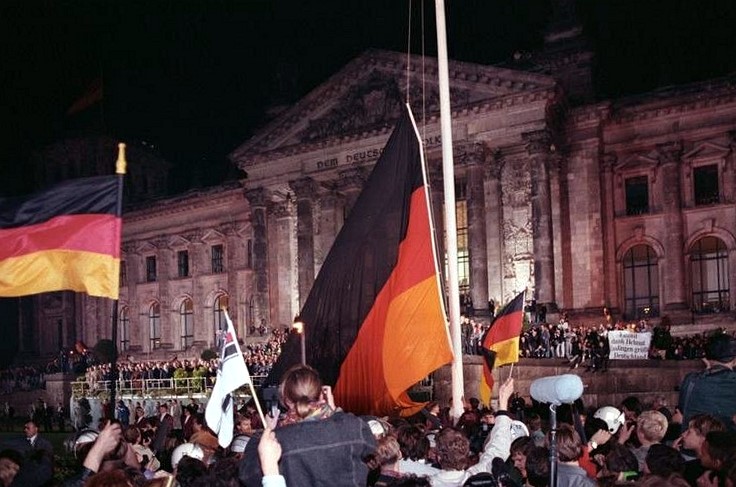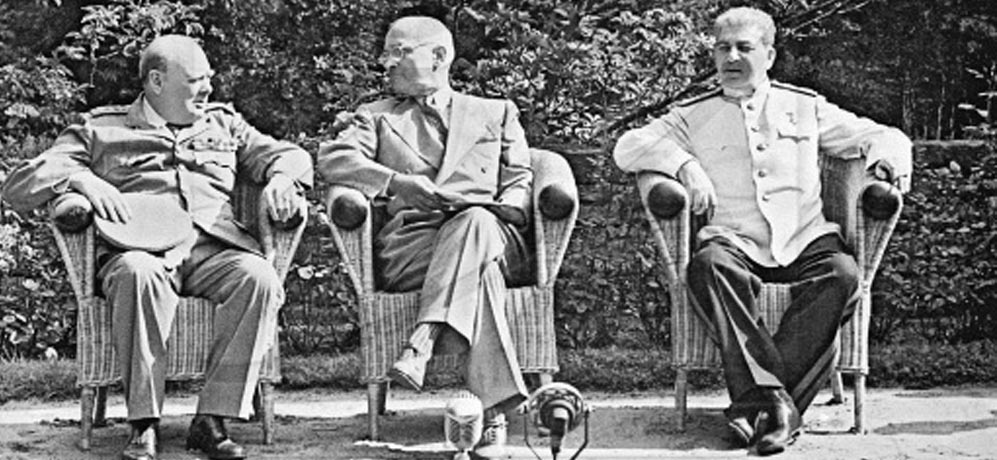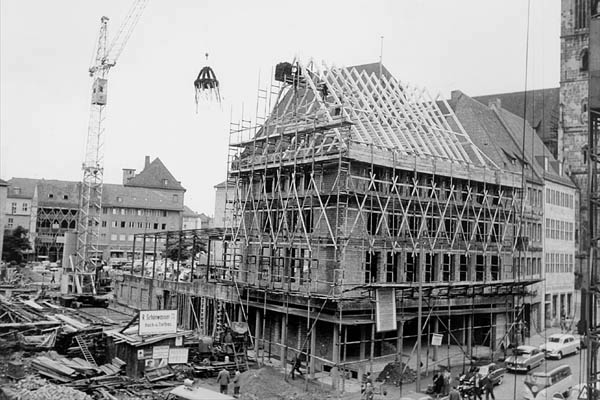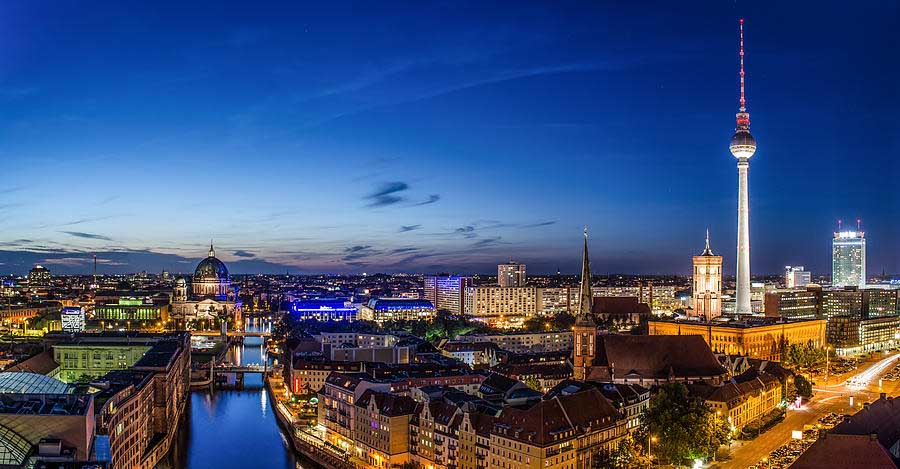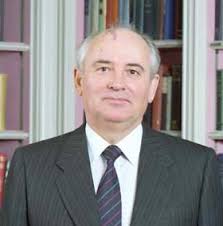
Mikhail Gorbachev was instrumental in the fall of the Berlin wall and the end of the cold war.
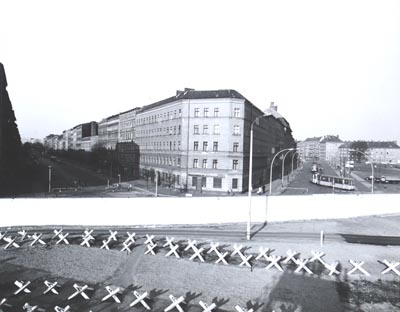
"The Anti Fascist Protection Barrier".
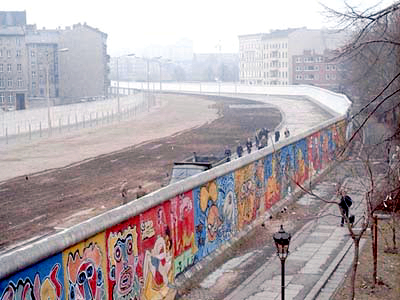
The Berlin wall was used as a canvas for many artists.
Iron Curtain
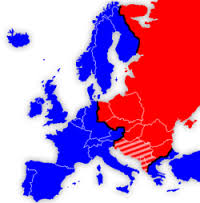 During the Cold War Europe was divided, on the one hand there were the Western, liberal democracies (Western Europe), on the other hand the communist countries of Europe (Eastern Europe). The border of these two blocks separating line by ideology that became know the Iron Curtain. So you called the border barriers of communist countries. They consisted of barbed wire, shooting commands, dogs running systems, watchtowers, sentry guns, minefields and kilometer-wide exclusion zones on the eastern side.
During the Cold War Europe was divided, on the one hand there were the Western, liberal democracies (Western Europe), on the other hand the communist countries of Europe (Eastern Europe). The border of these two blocks separating line by ideology that became know the Iron Curtain. So you called the border barriers of communist countries. They consisted of barbed wire, shooting commands, dogs running systems, watchtowers, sentry guns, minefields and kilometer-wide exclusion zones on the eastern side. The entire border was completely sealed off. This should be avoided in particular that people fled Communist-ruled countries to Western Europe.
With the end of communism in Eastern Europe and the Soviet Union came the dismantling of the Iron Curtain. It started with Hungary in May 1989. The Berlin Wall, which had for 28 years divided the city of Berlin, fell in November 1989 ( fall of the wall ), as countries reformed the iron curtain was opened all across Europe.
The term Iron Curtain was first used by former British prime minister Winston Churchill, in a speech targeted against USSR and their Eastern European satellite states.
The "Iron Curtain" has established itself in its history as a metaphor for the block formation for the purposes of political, economic and military isolation of the state-socialist countries of Central and Eastern Europe after the end of World War II and was used in this ideological context on the Western side. Influenced by the speech of the then British Prime Minister Winston Churchill in Fulton, Missouri, in 1946 .
Many of the borders along the Iron Curtain were heavily fortified and very difficult to cross with little travel past the Iron Curtain. Since the late 1940s, until the end of the 1980s the east and west divide would remain in place. After the end of the East-West conflict and the "fall of the Iron Curtain 's the concept went on to refer to the limit system in the pan-European language.
Although Churchill coined the "Iron Curtain" as a political metaphor, this was, however, political as synonymous with an insurmountable mentioned border early 20th century in several literary works, most notably the writer Philip Snowdon, Vasily Rozanov and Lev Nikulin contextualized the term with the aftermath of the Russian Revolution and the Bolshevik Russia versus Europe. In the context of a growing Soviet influence zone in Europe, the Iron Curtain several times during the Nazi newspaper was "The Kingdom" and used in an article published in articles Joseph Gobbels' in 1945.
In the imagery of the cartoons of international media of the "Iron Curtain" was hardly taken up immediately after Churchill's speech in Fulton: Western cartoons, which made reference to the speech, did not visualize this political metaphor but themed other aspects of speech such as "fate the occupied countries in Eastern Europe ". In the Soviet Union or in Eastern European countries in their sphere of influence of the "Iron Curtain" of politics and the media was hardly taken up, as it was considered "Western Terminus". Visually, the reaction of Stalin on the Fulton speech Churchill by cartoonist of the newspaper "Izvestia", Boris Efimov was carried out in terms of a bogeyman representation. The "iron curtain" was, however, not visualized in this cartoon, which was published again in Eastern media, but represented as text citation.
The inner German border was provided with barbed wire, screens, minefields, dog runs and sentry guns machines , in Berlin parted from 1961 the Berlin Wall to West and East Berlin. Images of these border fortifications show a closed regime, which has been expanded to 1989 technically. Through time up to the 1980s, the obstacles become more sophisticated, an electronic signal system, trip wires, signal rocket, detectors, sniffer dogs, night vision goggles, infrared signal equipment and helicopters have been used to stop people fleeing the east to get to the west.
To the technical closure regime of the "Iron Curtain" there was a border zone, the people was accessible only with special permission. The "Iron Curtain" thus divided cities, hit aisles through landscapes and presented because of its existence a "bringing forth a difference in the room" is.

